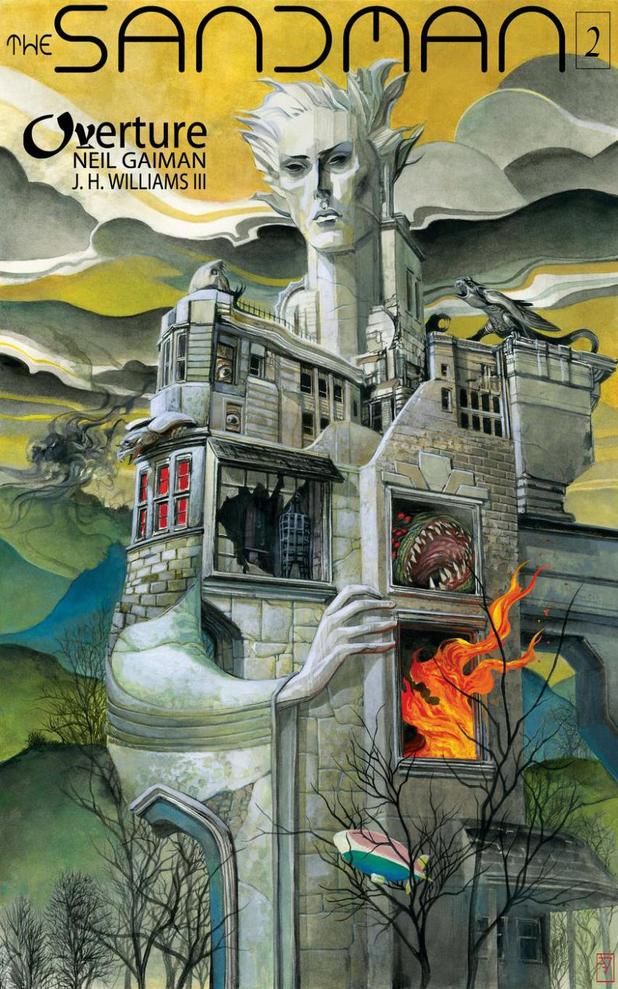In "Sandman Overture" #2 by Neil Gaiman and J.H. Williams III, Daniel meets with Mad Hettie and Morpheus learns of alarming news through a council with all his counterparts in different worlds.
Williams renders all the action, save for the first and last page of the issue, in tapestry-like double-page spreads, sometimes segmented by or overlaid with intricate panel designs. They are gorgeous tableaux, although like medieval tapestries, each spread is densely packed with imagery. The panel flow is suggested instead of clearly defined, making it more difficult to follow.
Fans of Williams' work will not be disappointed. The hallmarks of his work -- border patterns, jewel-like and lavish rendering, complex composition, deliberate uses of aggressive monotone alternating with a kaleidoscopic palette -- are all there. Williams is setting new artistic challenges for himself, too, excited by the demands of the visual possibilities of Gaiman's script. Gaiman takes care to write to his artists' strengths and "Sandman Overture" has been no exception.
On the other hand, the writing is a more difficult call. The debut issue was understandably full of set-up details, but strangely, the pace slows down, and "Sandman Overture" #2 is entirely exposition. It's complex, occasionally fascinating exposition, but exposition nonetheless.
Gaiman's prose has undeniable polish and grace, and is casually proficient in creating nostalgia and atmosphere. However, his work sometimes drifts into superficiality, and this weakness is only partly countered by charm of style. Gaiman sometimes composts classic motifs or ideas or riffs on other writers' ideas, usually with success, but sometimes he doesn't add enough of his own spin. He skimps at times on deeper pathos or digging deeper into difficult ideas or themes. That said, the strength of "Sandman Overture" so far is its expansion on fictional cosmology.
Character development is largely absent and relies entirely on the reader's prior knowledge of the "Sandman" oeuvre. The multiple Sandmen are whimsical and visually delightful -- clown Dream! Tree-Roots-Head Dream! Bugman Dream! -- but this is almost a throwaway since the story focuses heavily on Morpheus and Daniel. Gaiman pokes fun at Dream's "self-satisfaction," but he did the same thing with more subtlety in the rain scene at start of the "Brief Lives" storyline.
The best part of "Sandman Overture" #2 is the appearance of a blue girl who seems to be the eventual antagonist. Williams' art for this scene is flatter and the color and his panel design is particularly beautiful. Paradoxically, the scene feels peaceful, and this effect is amplified by Todd Klein's lettering for the characters' dialogue.
It's still a mystery why this series is titled "Sandman Overture," since the story isn't musically themed, and the plot seems to be shaped like a pocket off-shoot rather than an introduction to anything. The plot catalyzes on the revival of one of Gaiman's major recurring themes of order vs. chaos, and has already re-launched one of the greatest themes of "Sandman": the tension between free will and fate, and the thin lines between mercy and cowardice, bravery and cruelty.

